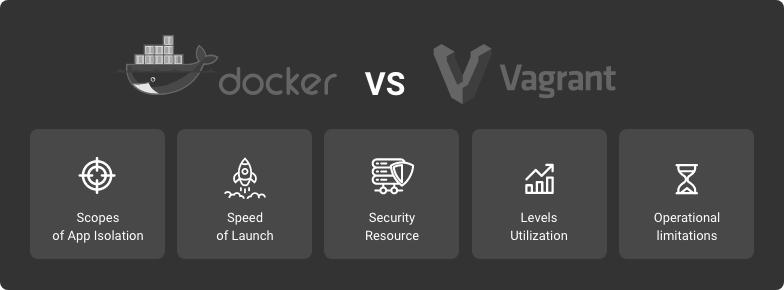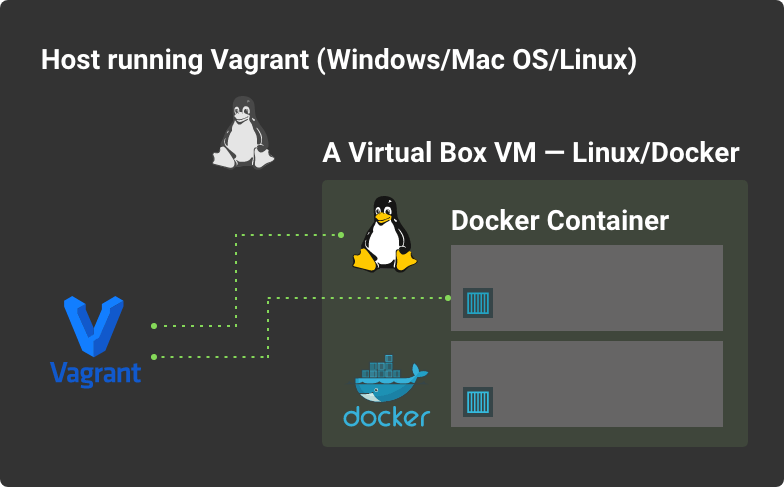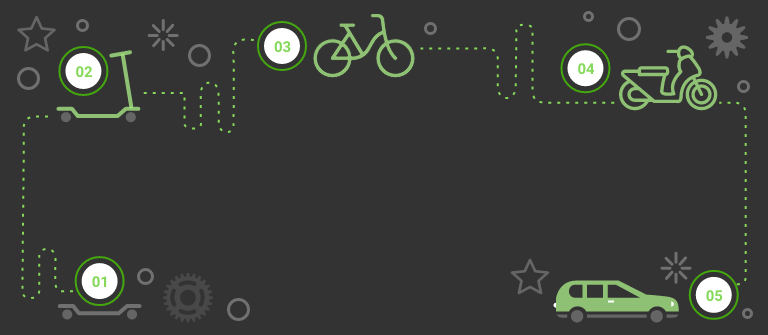In the early days of application development, a few lines of binary code was enough to make this thing work. In 2021, this process requires several milestones or development methodologies that work perfectly with each other. They are LEAN, Agile, and DevOps. All these approaches are aimed at effective, seamless, and bug-free application development while making smart investments and always keeping user-market specifics in mind.
Each of the methodologies suggests using different tools to streamline the development process. As for DevOps, Kubernetes, Docker, and Vagrant are some of the platforms that make this approach effective. Let’s find out how the last two work and which one would be the best choice for your project.
Containerized Approach vs. Deploying Virtual Environment - Where the Problems Come From
So let's start from the very beginning. What is the ultimate goal of developing any application? The ultimate goal is to build all the architecture and logic in such a way that the application works equally well and correctly regardless of device, operating system, version, and development stage. However, how can you be sure that this is so?
In response to this question, it makes sense to say a few words about the DevOps approach, which brings the development process and application operations closer together. As part of this approach, all specialists working on the application become closer to each other and share the responsibility for the application’s correct operation. Each created part is carefully checked and tested before work on the next stage begins.
Let's suggest we have an application or its part. How to make sure that it works the way we intended, but without resorting to using dozens of different devices? To do this, we need a virtual development environment that will ensure that our application works in the same way originally intended. Vagrant and Docker are two platforms that solve this problem; however, they do it differently.
According to research, “Docker and Vagrant are two tools that could be used to provision infrastructure. Vagrant is a tool used to automate the configuration of virtual machines, while Docker encapsulates the project into containers.”
To put it simply, Vagrant allows us to create a virtual environment depending on our requirements, while Docker containers applications with all its code, dependencies, libraries in such a way that it is easily deployed and seamlessly works in any virtual environment.
Let's take a closer look at how these two platforms work.
What is Vagrant?

Vagrant is a tool for creating a virtual machine that completely repeats the user experience according to the specified settings. That is, Vagrant allows you to mirror the operating system and all the necessary configurations to see how your application will actually work in a particular environment.
What is Docker?

Docker is a platform that allows you to containerize your application and create so-called microenvironments for deploying an application without having to run an entire virtual machine. Each container is an isolated virtual cell that contains a specific scenario for the application.
Thus, developers, testers, and DevOps engineers can spend less time debugging and finding critical differences in application performance in different environments. This means they can better deal with potential bottlenecks in the pre-production stages of the application development.
What’s the Main Difference Between Docker and Vagrant

It is possible to highlight three key aspects that determine the fundamental difference between the two platforms.
Approach to solving problems
The main difference between Docker and Vagrant is how these tools approach deploying a virtual environment. While Vagrant allows you to create an entire virtual machine, Docker packages your applications into miniature containers deployed in a predictable scenario.
Resources required
Another fundamental difference is the number of resources that both platforms require to cope with the task of deploying a virtual environment. Since Vagrant allows you to create an entire virtual machine, it requires more resources and time. In contrast, Docker's containerized approach enables you to deploy applications from containers faster and with less resource overhead.
Security
It is also worth mentioning the level of security. Virtual machines and containers are fundamentally different when it comes to security. The virtual machine is entirely self-contained and isolated. So it does not share resources with other virtual machines since they have their own operating systems.
Containers work differently. They are also isolated, but each accesses the guest operating system, making the security boundary difficult to grasp.
Docker vs. Vagrant for Development - the Comparison Chart
So let's make a Vagrant vs. Docker comparison using basic criteria for building and deploying your application efficiently.
Docker | Vagrant | |
Setting up | Despite the seeming simplicity of the approach, Doker developers say it is more difficult to install and use Docker than Vagrant. | To install Vagrant, you need to have an additional platform preinstalled, for example, Virtual Box. |
Collaboration | Docker is a great collaboration platform. All you need to do is create a Docker image and save it to the Docker Hub so that everyone on the team can have access to it. | Vagrant ensures the creation of a consistent workflow, so it would be wrong to say that it is bad for collaboration. This platform just works differently. |
Resource isolation and consumption | Docker containers need a guest operating system and a kernel, shared by all the containers you have. However, Docker uses fewer resources compared to Vagrant. | Vagrant allows you to isolate all the necessary resources completely. However, compared to Docker, it requires more resources initially. |
Startup times | Compared to Vagrant, Docker wins on this criterion because it spends fewer resources, and you can create Docker images faster than Vagrant virtual machines. | With Vagrant, it’s the opposite situation - creating a virtual machine is laborious and time-consuming, which may slow down the startup time a little. |
Vagrant and Docker Virtualization | Linux container | Virtual machine |
Image build time | You need less time to create a Docker image compared to the Vagrant virtual machine. | You need more time to create a Vagrant virtual machine compared to a Docker image. |
Security levels | Containers are considered less secure than virtual machines because each of the containers accesses the guest operating system. However, there is some good news. If the security of one of the containers is compromised, the others will not be affected since the containers are completely isolated from each other. | Vagrant provides a holistic and completely isolated virtual machine and is therefore considered a safer alternative to containers. |
Limitations | Docker may help with building and running containers on Linux, Windows, and macOS. | No operating system limitations |
Size | 100 MB+ | 1 GB+ |
Sharing | Docker Hub | Vagrant Cloud |
Docker or Vagrant - Which Is Better for the Development Process
Let's briefly summarize and visually compare the advantages and disadvantages of each of the platforms.
Vagrant or Docker - Pros and Cons Comparison
Docker | Vagrant | |
Pros |
|
|
Cons |
|
|
As a result, Docker offers a simpler and faster approach to creating virtual environments and significantly improves teamwork, facilitates version control, and uses fewer resources, thus providing better overall performance and efficiency.
According to research, “Docker performed significantly better than Vagrant in both tests. However, due to the limitations of the study, this cannot be assumed to be true for all use cases and scenarios, and performance is not the only factor to consider when choosing a provisioning tool. According to the data collected in this study, Docker is thereby the recommended tool to choose, but more research is needed to determine whether other test cases yield different results.”
Thus, the correct answer to this question depends on your project’s specifics, which we suggest dwelling on further.
Docker vs. Vagrant - Types of Projects Each of Them Is Suitable for
So, Docker is good for:
applications that need transparent version control
applications that focus on easy and effective communication between teams
applications that require a flexible virtual environment (that is, for the developer to be able to deploy the code on their laptop in the same way as on the server)
However, Docker is not suitable if you prioritize security, have multiple operating systems, or deal with GUI-based applications. Vagrant, in turn, is well suited for large projects that seek improved security, but at the same time, may afford to sacrifice speed and resources.
Using Docker With Vagrant - How Is It Possible

Using Docker in conjunction with Vagrant is possible since Vagrant integrates with Docker by default. Thus, you can use Docker as a provider for Vagrant to automatically create images, pull them, and run containers and customize files.
However, for this interaction to be possible, you still need Docker by itself, which can be challenging since not all platforms support Docker.
Conclusion
We have covered the specifics and use cases of Docker and Vagrant for the development process. Of course, the use of each of the tools implies a strong technical background, plus it is necessary to take into account the specifics of your project when choosing the right platform.
As a rule, Docker is a more reasonable alternative due to its simplicity, good usability potential for small and medium projects, and low resource consumption with the simultaneous potential to increase the efficiency of the development, debugging, and testing processes.
You may also agree on the use of this tool with your development company. Our experts are ready to share practical insights and give you more specific advice taking your project requirements into account.
Can’t afford to make a mistake with your DevOps tools choice?
Ask Us For HelpComments
Leave a comment








 Unit 1505 124 City Road, London, United Kingdom, EC1V 2NX
Unit 1505 124 City Road, London, United Kingdom, EC1V 2NX

Manny says11/12/2021 11:25 PM
thanks for very clear and nicely done explanation!
Kuldip says11/23/2021 9:42 AM
Grate explanation